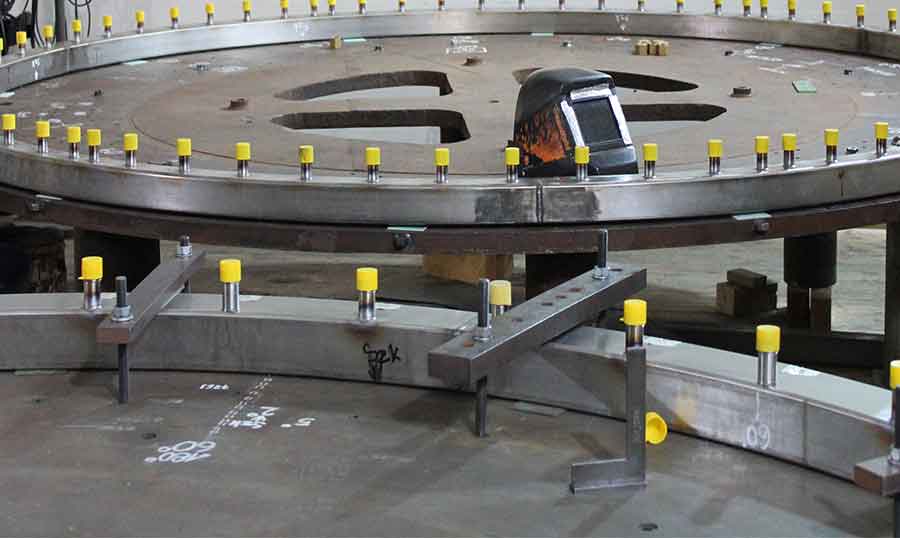We make seals from cast aluminum, cast iron, cast steel, oil seals for turbosets, fit parts and much more.
MIG welding
Welding with a consumable electrode in a shield of inert gases MIG (metal inert gas) or active MAG (metal active gas) are the most commonly used methods in welding processes. High welding efficiency, improvement of the welder's working environment and ease of automation are the main reasons for the popularity of these processes.
In the MIG/MAG method, the arc burns between the parent material and the welding wire automatically fed by the wire feeder. The arc space and the welded material are shielded with an inert gas (MIG) or active gas (MAG), selected appropriately for the type of metal being welded. The inert gas is argon, while to improve penetration and increase the welding speed, inert helium can be used as a homogeneous gas or as a component of welding mixtures.
Argon is the main component of most shielding gases for MAG welding. Due to the high instability of the arc when using argon alone, an oxidizing component is added - carbon dioxide, oxygen or a combination of both. In order to limit the size and amount of spatter and due to lower welding speeds, worse mechanical properties, the formation of larger amounts of dust and fumes, as well as limitations in the choice of the method of transferring metal in the arc, carbon dioxide is used less and less often as a shielding gas for the MAG method.
TIG welding
TIG welding (tungsten inert gas) is a method that allows obtaining thehighest quality welds in unalloyed and low-alloy steels, stainless steels and other high-alloy steels and in materials such as aluminum, copper, titanium and their alloys, as well as nickel alloys.
In the TIG method, the arc burns between the parent material and a non-consumable tungsten electrode. This method is used for welding both with and without manually fed additional material. The arc space and the welded material are shielded with an inert gas selected appropriately for the type of metal being welded. The most commonly used inert gas is argon. In order to improve the shape of the weld and increase the welding speed, in many cases it is possible to use chemically inert helium as a component of welding mixtures or sometimes as a homogeneous gas.

Brazing
Soldered joints - these are those in which metal elements are joined using a filler metal (solder) melted at a temperature much lower than the melting point of the joined parts. The weld area is heated to a temperature at which the crystal structure of the joined metals is able to absorb a certain number of filler molecules. The filler metal fills all the spaces between the joined elements. Hard soldering occurs when the melting temperature of the filler metal is higher than 450oC. Depending on the metals being joined, different filler metals and different temperature ranges are used. For steel, copper, brass or silver alloys are used at temperatures from 600 to 1450oC. For aluminum, aluminum-silicon alloys are used at temperatures of 530 to 570oC.
Welding of copper
Welding of elements from black steel to acid-resistant steel, aluminum. As one of the few on the market, we also weld copper. We have welding machines for TIG MIG and MAG welding. Our main projects are joining elements that are used in generators. Copper welding is an exceptionally difficult process, because the elements must be heated to very high temperatures before joining - this guarantees the impeccability of the joint.
Need more information?
Contact us.
If you are interested in our services and products or simply have additional questions, we cordially invite you to contact us. We will respond as quickly as possible. We will respond as soon as possible.

ADDRESS
Marek Wojtera Production and Service Company
Street. Krzemieniecka 48B
54-613 Wrocław


